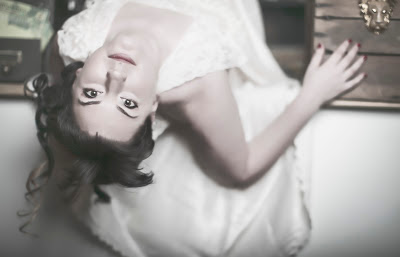pinup as we know it today is radically different to its humble origins which can be traced back to the beginning of the 20th century, a time when sexuality was both scrutinized and suppressed. For instance a woman showing a bare ankle was considered risqué and the word "sex" itself was not even used publicly.
As
art such images were deemed acceptable by the society of the time and
many of these early drawings and illustrations that are considered the
roots of the pinup genre used imagery of the burlesque striptease
routines as their starting point.
Additionally
magazines such as 'The Police Gazette' illustrated stories of murder
and mayhem by showing the leading ladies in various states of undress,
which was considered to be completely legitimate by the general populous
as they were considered newsworthy.
during the 1920's society began to rebel
against the repression of the previous decades with the energetic
dancing, partying and fashions such as flap skirts that showed more leg
than ever before.
Meanwhile
a new genre of nudist publications also surfaced linking sex and humor
again using drawings to illustrate their stories and jokes. It was from
such publications that what we think of as pinup art began to evolve
during the early 1930's.
Artists such
as George Petty and Alberto Vargas created calendar girls that very soon
adorned the walls of garages and workshops everywhere.
Additionally
Esquire magazine was initially published in this decade and very soon
it was regularly carrying pinup art and illustrations from many
different artists.
However it was the 1940's and World War II that really saw pinup art explode into the phenomenon we know today.
There
wasn't a G.I. who didn't have a painting of his favorite movie star
such as Rita Hayworth or Bettie Grable on his locker door or stuffed
somewhere in his kitbag so that he could be reminded of home during the
long hours spent away from his family and loved ones.
Post WWII artists such as
Elvgren emerged as failing magazines and publishers tried to woo the
public with risqué imagery. By this time the original artwork from the
more popular artists was becoming much sought after by certain
collectors and it was finally accepted that pinup had a place in the art
world which was somewhat ironic considering it's origins.
During the late 1950's and early 1960's
pinup began to surface in the form of photography as well as the now
traditional art. Magazines such as the famous Playboy were published
blending pinup style photography with well written lifestyle articles
and the response was huge.
The magazines ripped through any remaining repression gaining acceptability in most parts of society in a matter of a few years.
Although
some of this imagery could be considered much darker in style than that
of the early pinup artists it was still invariably done with a sense
of fun, tease and innocence that typifies the pinup genre.
During
the 1960's Playboy and other magazines gained a huge circulation all
the while moving pinup style imagery into the psyche of mainstream
America.
nfortunately by the 1970's photography had
just about taken over from art and most of the original pinup artists
had retired from the genre they had so lovingly created.
With
the advent of video the demand for adult material began to move towards
far more lewd and graphic imagery depicting all manner of sex acts and
it seemed that the playful innocence of pinup was lost forever.
In the last few years
there has been a real rekindling of mainstream interest in the genre
with new art appearing from modern artists such as Olivia and many of
the original Playboy pinup models using the Internet to sell their
classic prints and images.
From this a
new breed of Internet pinup models has emerged and although many of them
cross over into other genres they owe at least part of their style to
the classic pinup era.
Amongst them are several models who have attempted to solely recreate the classic pinup look with varying degrees of success.
Fortunately it
seems that at least some people out there still enjoy the beauty and
tease of the pinup genre over the much stronger and more explicit
material that is now so freely available.
This
is somewhat ironic when you consider that the latter in part way only
exists due to pinup art and photography helping to make images with an
erotic leaning more and more acceptable to American culture throughout
the 20th century.
i had been thinking about pin up for quite some time. i am drawn to the innocents yet femininity of it. the glamor and flawlessness.
this was a project i had been toying with for quit a while. part of the concept behind it is that i would collaborate with a slew of different people and do multitude shoots. i soon realized how many amazingly talented people i was fortunate to know that were kind, giving, and excited for the project.
the first shoot was a present for michael's birthday.
photography: c.b lindsey
make up: marc shaffar
hair: Marina Fichera
locations: a touch of vintage and rani woolpert
i hope to have the second part of this shoot up soon. as well as planing another collaboration with more talented friends in the near future.


























No comments:
Post a Comment